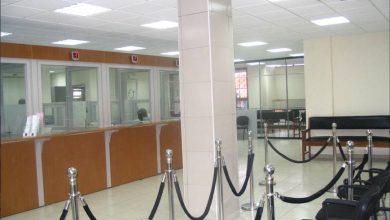Time to change tune on energy crisis
By now, electricity consumers in the country should be accustomed to the power supply cycle. In recent years, it has become predictable that if the country gets “above normal rainfall” hydro-electricity generation machines along the Shire River will be washed away.
And when the country gets “normal rainfall”, the water levels in Lake Malawi and its sole outlet—the Shire River— won’t be enough to push the machines to generate adequate electricity.
In yet another scenario, if the machines survive the storm of a heavy downpour in a particular season, then the Shire River will be filled with silt; thereby, again, making it difficult to produce electricity.
Newly-formed Electricity Generation Company (Egenco) and the distributor Electricity Supply Corporation of Malawi (Escom) are in a fix yet again. The centre, apparently, can no longer hold because there is reduced generation capacity due to low water levels.
Unreliable power supply derails economic growth and is a disincentive to attracting foreign direct investment (FDI). Experts estimate that power outages reduce economic growth by between two and four percent, with education being among the key sectors that are affected.
Malawi is banded alongside Burkina Faso, Cameroon and Niger as examples of countries with more than 80 in every 100 primary schools having no access to electricity in classrooms for lighting or powering computers.
This week, Escom painted yet another gloomy picture of power supply between July and December 2017. In fact, Escom suggests it may take five years of “good rains” to achieve desired water levels in Lake Malawi and Shire River to return to normal electricity generation.
There are several interventions by both Escom and Egenco to ensure reliable supply. However, from the look of things, most of the projects are long-term; hence, giving little hope for interim relief.
It pains to notice that 53 years after independence, our country is still heavily dependent on a single source of energy—hydro-electric. We seem to refuse to think outside the box, and like to put all our eggs in one basket, as even in the agricultural sector, we continue to bank on rain-fed agriculture despite boasting of one of the continent’s biggest fresh water lake and several perennial rivers.
Energy journals estimate that Africa is rich in solar, wind, hydro and geothermal power sources yet over 600 million or two-thirds of people on the continent live in darkness.
Poor or low financial investment in the energy sector by African governments, including Malawi, contributes to the unreliable energy supply. Above all, corruption and under-pricing of electricity further worsen the situation.
I have always felt that Malawi finds itself in the present predicament because of lack of meaningful investment in the energy sector in the post-single party era from 1994. Most of the hydro-electric plants were built between the 1960s and early 2000s.
The more talk and less action syndrome has not helped the country either.
Access to electricity is one of the key drivers of economic growth and poverty reduction. Sub-Saharan Africa has the world’s lowest access to electricity at an average of 22 percent of the population compared to Latin America with 80 percent and South Asia at 60 percent access. For the record, with 9.8 percent access rate, Malawi is at the low end in the Sub-Saharan Africa region.
Malawians have had enough of unreliable power supply in recent years, a development that has also negatively impacted on the business climate.
Recently, I got feedback from a reader who said he participated in debates on alternative power sources back in the 1980s. The reader recalled one proposal as advancing generation of thermal electricity in the Nthalire/Wenya region (the North Rukuru Coalfield) and transmit it to Mzuzu to link with the hydro-electricity from the Nkula/Tedzani.
Wrote the reader: “Interestingly, the Malawian CEO of Escom at that time was much in favour of the idea. But the idea was torpedoed. The coal is still there in the ground, and the idea is still available for further debate.”
The reader recalled other options being construction of purpose-build dams (Bua, Lilongwe, Diamphwe, South Rukuru, North Rukuru, Mulunguzi, etc) to generate hydro-electricity.
From this brief narrative from the reader, one can see that we, as a country, have talked too much and continue to talk. It is time for action, not explanations.



